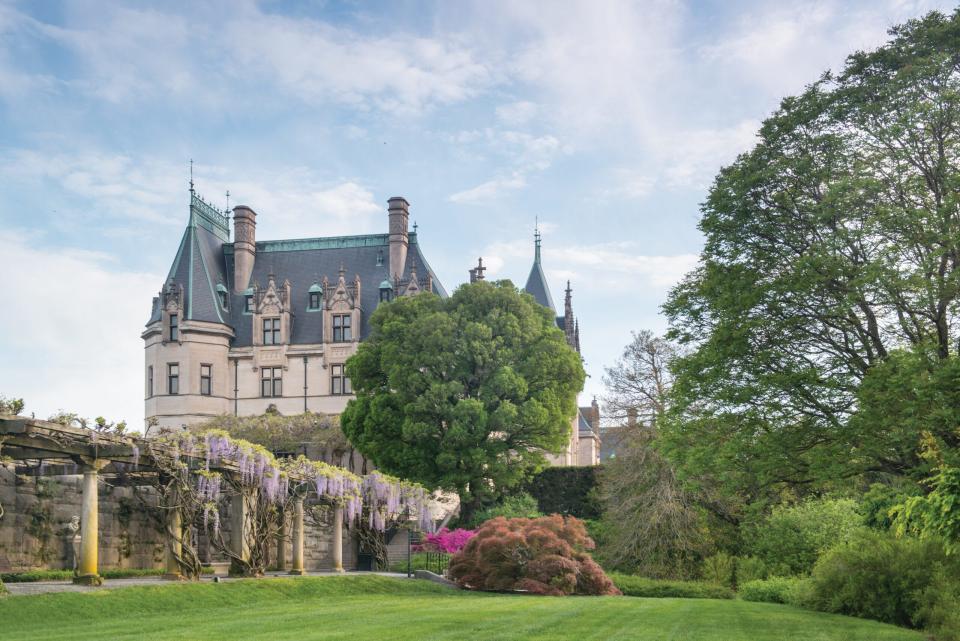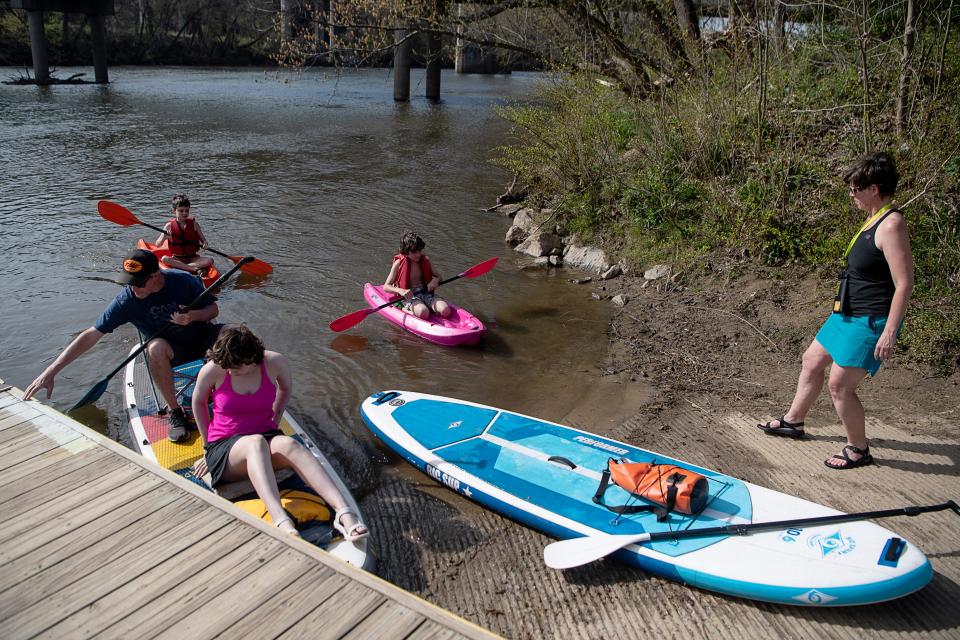Opinion: On Earth Day let's celebrate Asheville's climate, social, economic resilience
Resilience in the face of climate change has been the watchword of conservationists for the past five years. But resilience is more than merely reducing climate warming pollution or protecting communities from flooding. Resilience is a human commitment to improving life for everyone. What better time than Earth Day to proclaim Asheville as the city of resilience?
Former speaker of the House of Representatives, Tip O’Neill, was fond of saying, “All politics is local.” So too is conservation. Yet, conservation goes beyond just being “green.” Systemic conservation means protecting the human moral values that unite us all and nurturing the physical, social and economic environments that enable our children to live lives better than ours.

From the early 1800s, our highland environment was well known among low country gentry for its healthy climate. Arrival of railroads in the 1880s brought many from around the country seeking cures. Among them was Mrs. William H. Vanderbilt who suffered from chronic malaria. She arrived with her son, George. Through their connections and those of others, Asheville’s reputation as a healthy retreat soared.
More: Answer Woman: What is the history of the sanitariums in Asheville? Why so many?
More: Opinion: Let's talk about it: The power of Asheville, WNC stories in a climate crisis
Real estate values exploded. In his short story, "Boom Town," Thomas Wolfe recalled, “Everyone was a real estate man … barbers, lawyers, clothiers. ... When the supply of streets and houses was exhausted new streets … were created in the surrounding wilderness.” Among Asheville’s leading builders was James Vester Miller, an African-American man who overcame Jim Crow stigma and constructed three churches, the Scottish Rite Cathedral and Masonic Temple, and the YMI.

For Asheville in the 1920s, development was a roaring tiger. Population more than doubled from 20,000 in 1920 to 50,000 in 1930. The city rushed to pave streets for the onslaught of cheap automobiles, modernized its water system and splurged on an expensive art deco city hall and a public golf course. Onset of the Great Depression sucked the wind out of Asheville’s economic sails leaving it adrift with debt of roughly $2.8 billion in today’s dollars.
Acting with extreme responsibility and with an eye toward fiscal resilience, that is the ability to borrow in the future, City Council assumed city and county debt and negotiated a settlement that precluded default. On June 30, 1976 the city paid the last of that debt.
Four years earlier in an act of intense resilience, Jere Brittan and the Upper French Broad Defense Association forced TVA to abandon plans to build 14 dams in the watershed and flood control levees along Asheville’s riverfront. In 1973 three women with extensive foresight started Quality 76 to plant trees and haul trash out of rivers, which grew into GreenWorks, celebrating its 50th anniversary this year. Thus began the resurrection of the French Broad River basin.
More: Opinion: Whether from natural causes or development, loss of Asheville urban trees is sad
More: Opinion: Spring in Asheville time to reflect on plants: 'Amazing time to be a botanist'
More: Opinion: From the WNC mountains to Maldives: Urging glocal environmental diplomacy
Asheville was struggling, virtually a wilderness of vacant shops and modest eateries. I-240 was circling north of the city and the new Asheville Mall was syphoning customers from the few remaining downtown stores. Storefront windows were sheathed with plywood and those uncovered stared on all but empty streets.
In the early 1980s, City Council planned to bulldoze 11 acres of historic buildings to make way for a center-city mall. But a citizens group, Save Downtown Asheville, objected vehemently. In a burst of brilliance, member Peggy Gardner convinced SDA to hang bed sheets around the area to be razed showing exactly what would be lost. Voters defeated the bond issue for the downtown mall, and the stage was set for streets of resilient boutiques and excellent restaurants we so enjoy today.
Later that decade Asheville’s Chamber of Commerce, looking forward 25 years, developed "2010 Asheville City Plan." It was a classic strategy for resilience. As part of it, a team led by Jean Webb, Robert Kendrick, and Caroll Hughes fostered the French Broad River Foundation, which hired Karen Cragnolin as executive director. It evolved into RiverLink and, cooperating with Ashevillians Bill Goacher and his wife, laid the foundation to turn derelict riverfront factories into the River Arts District.

RiverLink was and still is the driving force creating the network of walking and biking trails and pleasant picnic parks along the river. The latest, Karen Cragnolin Park, is transforming a former auto crushing junkyard into a nature park, another quintessential hallmark of resilience.
What do all these examples share? Each was conceived and nurtured by individuals like David Brown, former UNCA chancellor, who led faculty and staff in the transformation of the local branch of the University of North Carolina into the foremost of the nation’s public liberal arts colleges.
Along with scores of others each of the folks mentioned above was then, as are hundreds now, doing their best to leave Asheville a little bit better than they found it. We celebrate them on Earth Day for they made, and all of us in our own ways today are making, Asheville a truly resilient city.
John E. Ross is author of "Through the Mountains: The French Broad River and Time" and other natural/cultural histories. He is a former RiverLink board member and speaks frequently on environmental stewardship in the watershed.

This article originally appeared on Asheville Citizen Times: Asheville has history of climate, social and economic resilience

